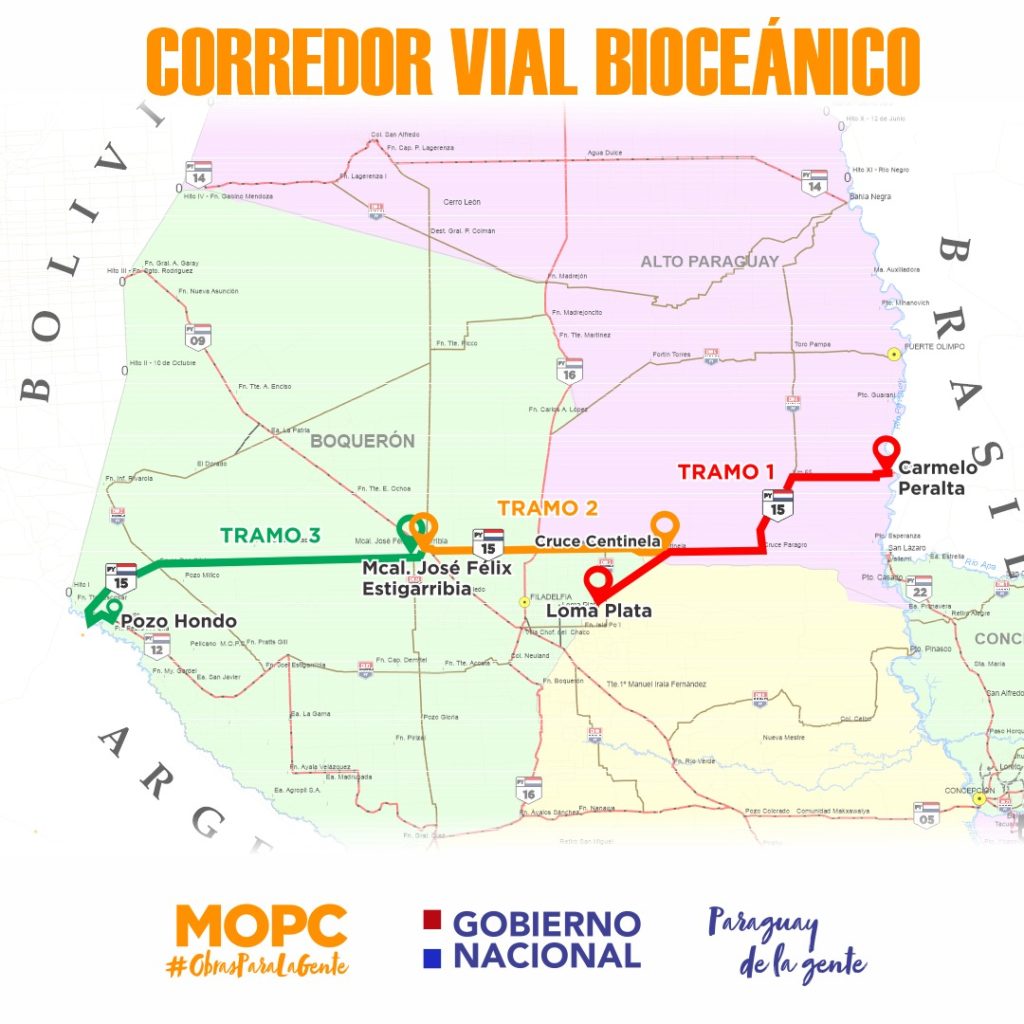RIO DE JANEIRO, BRAZIL – Currently, only five kilometers remain to be asphalted, and then the signaling and placement of paving, with which the 277 kilometers of asphalting of the bi-oceanic route will be completed, which in this first stage joins the communities of Carmelo Peralta and Loma Plata.
Until 2019, the Alto Chaco was the only region with no single centimeter of asphalted road. Work on this important project began in January of the same year. Today, of these 277 kilometers, 163 kilometers are in Alto Paraguay.
Even though other important stretches within the department, such as the roads leading to Fuerte Olimpo and Bahía Negra districts, still need to be asphalted, this first all-weather road layout greatly speeds up travel to the area.

The community of Loma Plata is about 340 kilometers from Fuerte Olimpo. In the past, going to this locality by dirt roads took between eight to ten hours, depending on the state of the stretches, since on rainy days, the situation worsened. With the new bi-oceanic route, about 210 kilometers are traveled on asphalt, and only about 140 kilometers of dirt road remain to reach this destination.
DEVELOPMENT
With the new bi-oceanic route and the imminent beginning of the works for the bridge that will join Paraguay with Brazil, a whole range of development possibilities opens up for the inhabitants of these distant communities of the Alto Chaco.
Precisely, the community of Carmelo Peralta, up to where the asphalt reaches, begins to promote tourist development with the installation of numerous lodgings and some hotels, which will lodge those interested in knowing the beauties of the great marshland. The same situation occurs in Fuerte Olimpo and Bahía Negra, but with less intensity, considering that they still have problems due to the precariousness of their roads, especially on rainy days.
The all-weather road makes it possible to expedite the shipment of cattle to slaughterhouses, which ensures the development of cattle raising in the area, considering that Alto Paraguay, with almost 2 million head of cattle, centralizes its economic potential in this area.
ANECDOTES
With the new route of the bi-oceanic road, there are many anecdotes that people tell of when in the past they were stuck on the side of the road and could not continue their journey due to the precariousness of the road. One of these occurred in 2014, when several passengers of a bus trying to reach Bahía Negra were stuck for almost two weeks, unable to move forward. They finally had to be rescued aboard Air Force helicopters.
COMPLETION
By the end of February, the completion of the 277 kilometers of the first stage of the bi-oceanic route is foreseen, considering that the second stage includes the road from Loma Plata to Pozo Hondo, the border with Argentina. In this way, the initial project that seeks to join the Pacific and Atlantic oceans to speed up trade will be completed.
The bi-oceanic consortium made up of the companies Queiroz Galvao S.A. and Ocho A S.A. was in charge of the construction. Some 1,000 workers worked for 38 months, and the initial cost is US$445 million, corresponding to the loan from the Inter-American Development Bank (IDB).

